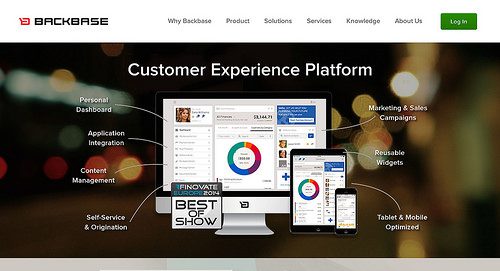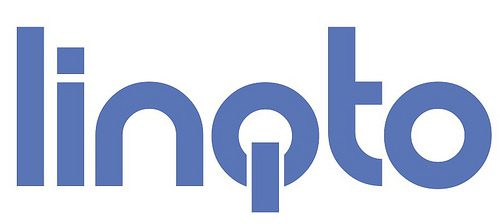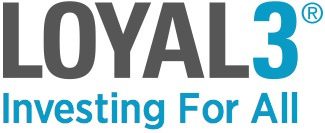Data analytics (broader than just fintech, but has significant financial focus)
Fintech Fundings: 17 Companies Raise $242 Million in Week Ending Sep 26
Data analytics (broader than just fintech, but has significant financial focus)
Finovate is part of the Informa Connect Division of Informa PLC
This site is operated by a business or businesses owned by Informa PLC and all copyright resides with them. Informa PLC's registered office is 5 Howick Place, London SW1P 1WG. Registered in England and Wales. Number 8860726.

In a round led by Ignition Partners and Relay Ventures, Toronto-based authentication specialist, Bionym has brought in $14 million in new funding.
Bionym is the maker of the Nymi, a wearable authentication solution that uses an individual’s cardiac rhythm to provide a unique identifier that makes pass codes and PINs passé.

There will be a lot going on over the course of the two day FinDEVr conference in San Francisco next Tuesday and Wednesday. You can still pick up your ticket here.
Each of the companies below will have 6 minutes on stage to show off what their tools are all about:
PayStand, an online payment solution that offers zero transaction fees
Plaid, an API that powers fintech applications
Plaid is an API for financial infrastructure – we give developers the tools they need to build applications that interface with banks.
Prudena is a subscription-based online community that provides value analysis to developers.
SecureKey Technologies delivers authentication solutions for online consumer services
Sekur.me eliminates passwords by turning your phone into your digital identity.
SimplyTapp provides host card emulation
Tagcash, a digital payments and rewards company
The TxPUSH Initiative makes real time account events available to third party apps.
Thinknum provides technology for financial analysts to host their financial data in the cloud.
Trulioo a cyber identification company.

FinDEVr, the first event for fintech developers, is right around the corner. For the past few weeks we’ve introduced you to some of the innovators who will be presenting, demoing, and holding workshops on Day One.
Today, we’re happy to help you get to know some of the companies that will be showcasing and sharing their APIs, SDKs and more on Day Two.
BCL Technologies develops APIs for Financial Text Extraction that unlock Big Data in unstructured documents and websites, enabling FinTechDevelopers to easily extract structured Financial Triplets from any source.
Toronto-based Bionym is a team of experts in cryptography, biometrics, and security. Our first product is the Nymi, a wearable device that enables the user to authenticate once via unique cardiac rhythm and securely and seamlessly assert Persistent Identity to any system.
Blockchain is the world’s most popular, web-based Bitcoin wallet and the most highly trafficked Bitcoin website. Blockchain is the defacto search engine for the Bitcoin community. Blockchain has over 2 million wallets and our footprint continues to grow quickly.
CrowdCurity is a web security marketplace. We connect businesses with security testers. We do bug bounty programs-as-a-service. Bitcoin First.
Entersekt is an innovator in transaction authentication and mobile app security. Our one-of-akind approach to harness the power of electronic certificate technology with the convenience of mobile phones providing financial institutions and their customers with full protection from online and mobile banking fraud.
Google Cloud Platform enables
developers to build, test, and deploy applications on Google’s highly scalable and reliable infrastructure. This suite of services allows developers to choose from computing, storage, and application services for web, mobile, and backend solutions.
GreenAddress IT is a leader in securing bit coins and providing instant clearing confirmations. It supports desktop, mobile, and web apps, and offers a very featureful and secure wallet as well as APIs to enable third party developers.
Kiind helps businesses reward their employees and customers with gift cards., With Kiind, you can easily send personalized offers to multiple contacts, and Kiind’s technology allows you to defer when you pay for rewards and gifts, thereby saving you money.
Knox Payments allows people to make ACH payments using only their online banking login information, providing the cheapest, safest, and easiest way to accept digital payments.
MASSPAY is m-payments for every(f)one. If you know how to dial, you know how to pay. It’s simple and convenient. You don’t even need a smartphone with a data plan – you can use it with an NFC QR code. MASSPAY is the first solution dedicated to emerging and developed markets with minimum investment.
Morpheus Aiolos is a company based in Spain that has developed financial software since 2012. We have two featured products: an API to extract bank transactions and a clone of Mint, which uses the API.

In a deal valued at $8.3 billion, SAP has announced that it is acquiring Seattle-area fintech innovator – and FinDEVr presenter – Concur Technologies.
There are still “i’s” to be dotted and “t’s” to be crossed: the acquisition is subject to both approval from shareholders and regulators. But assuming all goes well on those fronts, the deal is expected to close by the end of 2014 or, at the latest, in the first quarter of 2015.

After a busy two days at FinovateFall packed with people, some of the most innovative new technology we’ve seen, and some rather entertaining demos, the audience has spoken.
AnchorID for its new way to log into websites and apps. One universal username logs you in with unique security.
blooom for its simple tool built to fix the millions of mis-invested 401(k) allocations for individual clients.
CrowdFlower for its leading data enrichment platform to help data scientists, analysts, and engineers collect, clean, and label data to make it useful.
Loyal3 for its use of social technologies to democratize the markets, making investing in IPOs and stocks easy and affordable for everyone.
MX/MoneyDesktop for its WideNet Technology to help FIs expand their market reach, and its Helios cross-platform digital banking app.
NICE Systems for its real-time authentication that strengthens and streamlines the authentication process in real-time, while customers converse with an agent.
Toopher for its multi-factor authentication platform that uses the location awareness of your smartphone to automate authentication for logins and critical actions.
Notes on methodology:

“Never type a password again– myris is a USB powered Iris Identity Authenticator that grants you access to your digital world.myris uses patented technology to convert your individual iris characteristics to a code unique only to you, then matches your encrypted code to grant access to your PCs, e-commerce sites, applications, and data – all in less than 1 second.”

“Backbase is launching Backbase Engage. Backbase Engage is a complete digital banking solution that’s out-of-the-box ready and designed to meet the needs of regional banks and credit unions. With Backbase Engage, banks regain control over their digital strategy. Backbase Engage’s easily extensible structure revolutionizes the traditional digital bank delivery model by empowering banks to make their own strategic choices instead of being locked in to those made by core banking vendors.Alongside Backbase Engage, Backbase is launching the Backbase Marketplace, an open marketplace for banks to connect with vendors who have come together to offer freedom of choice to banks and credit unions looking to regain control over their digital strategy.”

This post is part of our live coverage of FinovateFall 2014.
The team from Silanis is making its way to the stage right now. Silanis will demoing its electronic signature platform, e-SignLive
The e-SignLive Use Your Own Device (UYOD) capability solves a fundamental problem in financial services and banking: how to capture a customer’s handwritten signature electronically, without asking the customer to come into the branch. This innovation enables the customer’s smartphone or tablet to be used as a signature- capture device. It does not require an app or any in-branch hardware. Banks can now make remote customer on-boarding convenient and secure with any smartphone.

Linqto debuted Personal Banker, a remote banking solution that connects customers with live tellers:
“Linqto Personal Banker introduces real time face-to-face conversations into banking transactions, connecting live, on-duty bank representatives with their customers.Linqto uses mobile technology to put the relationship back into personal banking. With live video tellers, your mobile device becomes your neighborhood branch. The customer experiences personal service with remote convenience.Your bank employees are your most important asset. Give them the power to build stronger relationships with your digital customers using Linqto’s Personal Banker remote banking solution.”

MoneyStream debuted its technology that learns and predicts a user’s spending pattern:
“MoneyStream sits in between other financial institutions, consolidators, and aggregators, using patent pending technology to manage the complex network of money and creating a direct relationship with the consumer.In addition, MoneyStream’s smart technology uses learning algorithms to detect and predict a user’s spending patterns and do a significant part of the user setup for them, just as a trusted personal financial assistant would do. The free service lets users view and pay bills, detects upcoming money issues, and provides visibility to a future cash flow, with little or no effort on the user’s part.”

LOYAL3 launched its mobile app:
“The LOYAL3 iOS 8 Mobile App is the easiest way to buy or sell stock, with as little as $10 and no fees. LOYAL3’s app also allows users to quickly access account information, transaction history, fund transfers, and important notifications. For those participating in IPOs, the app makes it easy to view the status of the IPO, receive notifications about IPO pricing and allocation, and confirm or withdraw their IPO reservations right from their iPhone.”